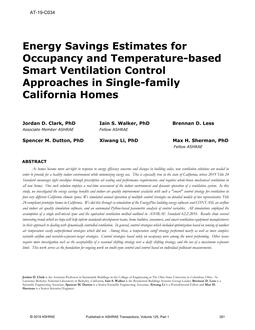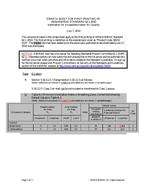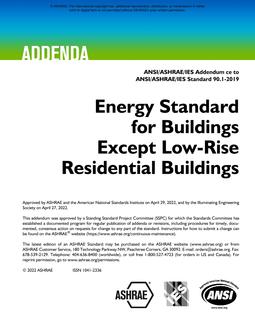The current practice in North America for predicting the overall (convection and radiation) heat transfer in fenestration product frame surface cavities that are open to the outdoor or indoor environment, using fenestration system heat transfer computer models, is specified in draft ASHRAE Standard 142P (1998). For the outdoor side of a fenestration product, it is recommended that the external boundary condition be brought into the cavity a distance equal to five times the width of the exterior opening (the so-called “five-times rule”). On the on indoor side, a “one-times” convention is used (one times the width of the cavity opening). These rules or conventions do not appear to be supported by any solid technical data or by any published research. In European practice, upper and lower limits of the heat transfer through closed and partially open frame cavities are currently proposed. In this paper, computer modeling of an aluminum frame window with outdoor frame surface cavities was performed using a finite-element computational fluid dynamics method. The model included turbulent parallel outdoor flow past an aluminum-framed horizontal slider with a profile that included several frame exterior surface cavities. The heat transfer results from this study indicate that significant convective heat transfer effects extend only up to one times the width of the cavity opening. Therefore, it can be concluded that the penetration of forced convective effects in open frame cavities is not the function of the type of airflow (i.e., outdoor forced vs. indoor natural convection). From the results of this study, and also considering the view factors for the radiant heat transfer exchange that occurs in the cavity, it may be concluded that a “one times” convention would be more appropriate for both outdoor (weather) and indoor (room) side surface cavities of fenestration systems.
AUTHOR: Thomas R. Branchaud, Dragan Curcija, Ph.D., William P. Goss, Ph.D.
CITATION: Thermal Performance of the Exterior Envelopes of Buildings VII
KEYWORDS: December, Florida, 1998
YEAR: 1998
Citation: Thermal Performance of the Exterior Envelopes of Buildings VII
Product Details
- Published:
- 1998
- File Size:
- 1 file , 140 KB
- Product Code(s):
- D-8078


